Close to 50% of Americans are hypertensive. This is a worrying trend considering the close relationship between hypertension and cardiovascular disease, the top cause of death in the U.S. Did you know that you can train your taste buds to adapt to the taste of less salt and hence lower your blood pressure? Here’s your chance to learn how.
Key takeaways:
- Americans are consuming 50% more sodium than is recommended
- Taste adaptation can help to reduce sodium intake by 30%
- Taste adaptation does not reduce consumers’ preference for salty foods
- There’s a need for more effective sodium reduction strategies
Americans are consuming at least 50% more sodium than they should. It appears that COVID-19 made this worse as salty snacks offered solace to those confined indoors indefinitely. This and other factors have contributed to the rise in hypertension and cardiovascular disease, the leading cause of death in the U.S.
The Centers for Disease Control (CDC) has issued measures to reduce sodium intake in the American population. Most of these measures target processed foods since Americans consume about 70% of their sodium from processed foods. The CDC advises checking food labels that include terms such as “low sodium,” “no salt added,” or “reduced sodium.” Such phrases may not mean anything unless you understand how much sodium is safe and sufficient.
How much sodium should be in your diet?
The Dietary Guidelines for Americans (2020-2025) recommends a daily sodium limit of 2,300 milligrams. Americans are currently consuming an average of 3,400 milligrams of sodium daily. This is about 50% more than they should, underscoring a need for a 50% reduction in sodium intake.
A new study has revealed that taste adaptation is an effective strategy in lowering sodium intake while at the same time boosting the enjoyment of sodium-restricted meals. The researchers noted a 30% reduction in sodium intake, which was significant. However, participants still preferred salty foods over reduced-sodium meals. Is it possible to enjoy the full flavor of salt while still maintaining the recommended sodium intake level? Let’s examine the details of this study.
The Sodium Watchers Program Study
Taste adaptation is a gradual process where you train your taste buds to be less stimulated to sensory stimuli. When you eat an extra spicy food, you’re likely to feel the spiciness in the first bite and maybe spit it out. That sensation is likely to decline as you take more bites of the spicy food. This is a form of taste adaptation.
You can also adapt your taste buds to weaker stimuli, such as less salt. Researchers from the University of Kentucky carried out a pilot study to investigate taste adaptation in hypertensive patients and its impact on blood pressure. The results of the study were presented at the ACNAP-EuroHeartCare 2022 Congress which is organized by the European Society of Cardiology.
The lead author of the study, Misook Chung, said: “One of the major barriers to sticking to a low salt diet is that people do not like the taste, but few studies have addressed this issue.”
Details of the study
The researchers created a program called Sodium Watchers to investigate the gradual taste adaptation to less salty foods. They considered the following parameters:
- Sodium intake
- Blood pressure
- Enjoyment of a sodium-restricted diet
- Preference for salty food
A total of 29 hypertensive adults were included in the study. The participants were divided into an intervention and a control group. The control group received the standard medical and nursing management for hypertension. The intervention group received individualized education in sodium reduction strategies with a follow-up plan.
All participants were offered a tablet computer to help them identify foods that have a high sodium content. The program ran for six weeks. At the start and end of the program, all participants provided a 24-hour urine sample for analysis and had their blood pressure recorded. By the end of the study, three participants had withdrawn.
Results of the study
The researchers observed a 30% decline in sodium intake in the intervention group. The sodium intake in the control group had increased by about 500 milligrams daily. The intervention group also recorded an increased enjoyment of less salty food.
Conclusions from the study
The researchers made three important conclusions from this study:
- Taste adaptation resulted in a 30% reduction in sodium intake in the intervention group. In comparison, participants who didn’t undergo the taste adaptation interventions ended up consuming more sodium.
- Participants in the taste adaptation group learned to enjoy the sodium-restricted diet. However, they still preferred saltier foods.
- The sodium reduction due to taste adaptation did not translate to a “clinically significant” drop in blood pressure.
The researchers concluded that there’s a need for larger clinical studies to demonstrate the effect of taste adaptation on blood pressure.
Strategies for adapting your taste buds to less salt
Lowering your sodium intake can reduce your blood pressure and consequently lower your risk for stroke and heart disease. Adapting your taste buds to the taste of less salt can help to reduce your sodium intake by about 30%. Here are seven things that you can do to reduce your sodium intake:
- Swap salt for spices such as rosemary, garlic, thyme, basil, tarragon, and pepper.
- Avoid refrigerated foods, which tend to have a bland taste that forces you to add salt to bring out the flavor of the food.
- Be creative with your meals by adding color and varying the presentation. This will make the meal more appealing.
- Remove the saltshaker from the dining table to avoid the temptation to add salt to food. Salt should be added when the food is being cooked.
- Try new recipes to add novelty to your meals.
- Stick with meals that you naturally enjoy. It will be difficult to enjoy unsalted foods that you don’t enjoy in the first place.
- Let the process be gradual. Trying to do it all at once will increase your likelihood of failure.
Americans are consuming 50% more sodium than they should. The study mentioned above demonstrates that taste adaptation can help to reduce sodium intake by about 30%, even though participants still preferred the taste of saltier foods.
There’s a need for a strategy that offers at least a 50% reduction in sodium intake as well as a reduction in the preference for salty foods if the recommended sodium reduction goals are to be achieved.
MicroSalt® means double the flavor and 50% less sodium
MicroSalt® crystals are real salt and thus have the same taste as salt. However, the particles are 100 times smaller and have great adhesion properties, ensuring that you get a full burst of flavor instantly. This provides snack manufacturers with a rare opportunity to create snacks with 50% less sodium without having to compromise on flavor.
Contact MicroSalt® today
MicroSalt® is the proud global winner of the P&G Alumni Network’s 2021 Star Entrepreneur Award. Our team strives to create a new way of enjoying food, where great taste and good health go hand in hand. Simply contact us to learn more about how we can help maintain flavor with less salt.




